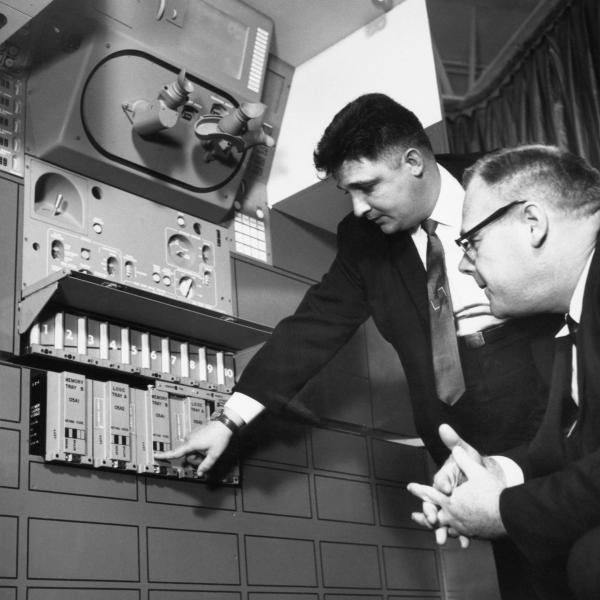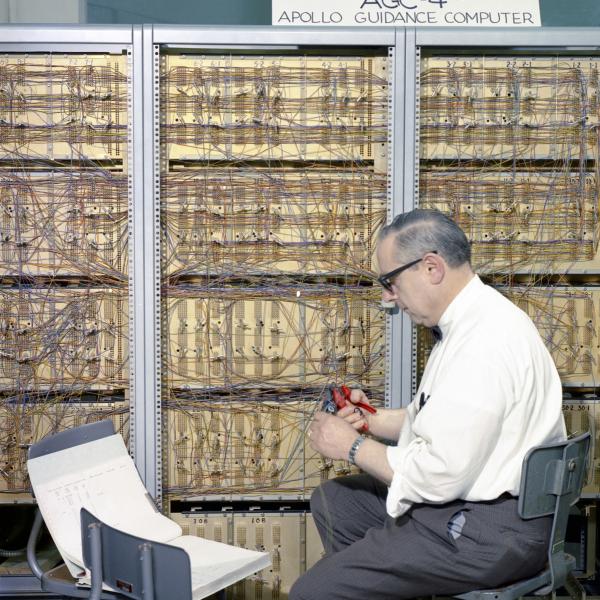
Donald Bowler
Donald Bowler enlisted in the U. S. Navy serving during World War II. After his military commitment, Bowler entered Clarke University in Worcester, graduating in 1951 and later earned a Masters Degree in Mathematics at Harvard University in 1952. He joined the staff of MIT Instrumentation Laboratory (now Draper) in 1952. Most of Bowler’s career was spent on the development of inertial guidance systems, beginning with a project in the 1950’s when the Laboratory received a contract to develop the Polaris Missile Guidance System for the Navy’s Fleet Ballistic Missile Program.
His endeavors continued into the 1960’s, focusing on the inertial guidance and navigation system in the spacecraft of NASA’s Apollo Program for manned moon landings. Both programs were on the cutting edge of inertial guidance technology and required digital computers for computation and system control. Digital computers were in their infancy. Their application to ballistic missile and manned spacecraft flight control was a pioneering effort that faced many technical complications. Bowler's research and development work contributed to the resolutions of many of these challenging design problems. As the Apollo missions reach its conclusion his interest expanded to include the software for inertial guidance and control systems in an experimental aircraft and the NASA Shuttle. His interest in software carried over into the last several years of his career when he returned to the Navy’s Fleet Ballistic Missile Program and Draper Laboratory’s development of the guidance system for the Trident Missile.
After Apollo, Bowler continued into working on the NASA Shuttle before moving back to the Navy Missile program and the Trident Missile. He remained with Draper for nearly 40 years, retiring in 1989.

